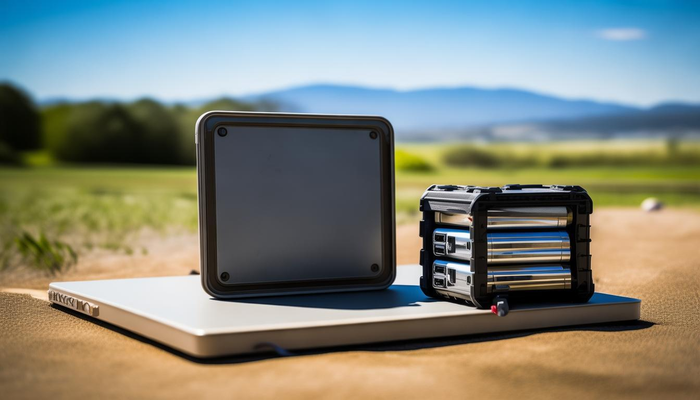In recent years, with the frequent occurrence of emergencies such as extreme weather and geological disasters, people have paid more and more attention to rapid response and rescue after disasters. Post- Rapid Kits , as a solution that can quickly provide support for key materials and equipment after disasters, has gradually entered the public's vision and become an indispensable and important part of the emergency rescue system.
Post- Rapid Kits, simply put, is a standardized combination package pre-equipped with various materials, tools and equipment required for emergency rescue. Its core purpose is to allow rescue personnel or self-rescue forces in the affected area to quickly obtain a complete and practical equipment after a disaster, so as to quickly carry out rescue, resettlement and recovery related work. It is like a "mobile emergency warehouse" that can play the greatest role in the shortest time.
A complete post-disaster rapid deployment package usually contains the following key modules, and each module has many detailed things. I will tell you everything:
1. Communication guarantee module : This module is too important. Communication will often be interrupted after a disaster, so there must be a portable intercom – it is the type that can support multiple frequency bands, have relatively stable signals, and have backup batteries, which must be able to support continuous use at least 24 hours a day; satellite phones are also a must-have, and in places without mobile phone signals, it is the only external contact method; mobile hotspot equipment can help rescuers build a temporary network environment, facilitate data transmission and information sharing, and provide global procurement services for weak current intelligent products! , this may contain some weak current equipment suitable for communication modules
2.
3. Medical first aid module : Injury is inevitable, so there must be common first aid drugs, such as bandages, gauze, disinfectant, bandages, etc., as well as tourniquets, splints, etc. for treating fractures and severe trauma. In addition, some common drugs such as antipyretics, painkillers, and anti-allergic drugs must also be prepared. Pay attention to the shelf life of the drugs and change them regularly; there are also first aid guidelines, which are best for both pictures and texts, simple and easy to understand, so that people without professional medical knowledge can follow them.
4.

5. Energy supply module : Without electricity, many equipment cannot be used! Therefore, solar charging panels are necessary, preferably with a larger expansion area, higher charging efficiency, and lightweight and easy to carry; large-capacity mobile power supply, the best one that can charge multiple devices at the same time, is at least 20,000 mAh; there are also backup dry batteries, and all models need to be prepared, such as No. 5 and No. 7, and maybe 9 volts, for use in some small devices.
6.
7. Lighting tool module : The disaster site must be pitch black at night, so flashlights are indispensable. They need strong light, long range and long battery life, and it is best to be waterproof; headlights are also very important, freeing hands and making it easier for rescue personnel to free up their hands to do other things; camp lamps can also provide large-scale lighting for lighting in temporary resettlement sites or command centers.
8.
9. Daily necessities and tools modules : You must eat and drink, packed compressed biscuits and canned food, with longer shelf life, and bottled water. At least everyone's daily basic needs must be ensured; portable folding knives and multi-functional engineer shovels – this is a lot of uses, and you may be able to dig, chop, and pry things; a waterproof and shock-proof storage box is used to hold these little things, which is easy to carry and not easy to damage.
Some people may ask, what is the difference between this post-disaster rapid deployment package and the kind of emergency package we usually put at home? In fact, the difference is quite big. Usually, the emergency packages at home may be more for individuals or small families to use for short-term self-rescue. The things are relatively basic and small in quantity. Post- Rapid Kits are more used by rescue teams or community emergency teams. The things inside are more professional and comprehensive, and can be reused and supplemented. The modular design is also convenient for adjustment and combination according to different disaster types and rescue needs. Some people may wonder, is this deployment package the more expensive, the better, and the more things you install, the better? That's not the case. It should be based on actual needs. For example, the equipment required is different in areas where earthquakes often occur and floods often occur. And portability should be considered. If it is too heavy and too large, it will be inconvenient to transport and transport, which will affect the deployment speed.
Personal opinion, the promotion and application of Post- Rapid Kits are of great positive and important significance in improving post-disaster rescue efficiency, ensuring the basic lives of the affected people, and reducing secondary losses caused by disasters. All regions and relevant institutions should pay attention to it, configure suitable and high-quality rapid deployment packages based on their actual situation, and conduct regular inspections, maintenance and updates to ensure that they can truly play a role in the event of a disaster. At the same time, relevant rescue personnel must be familiar with every item in their bag and know how to use it and when to use it, so that this "mobile emergency warehouse" can truly make the best use of it!
Leave a Reply